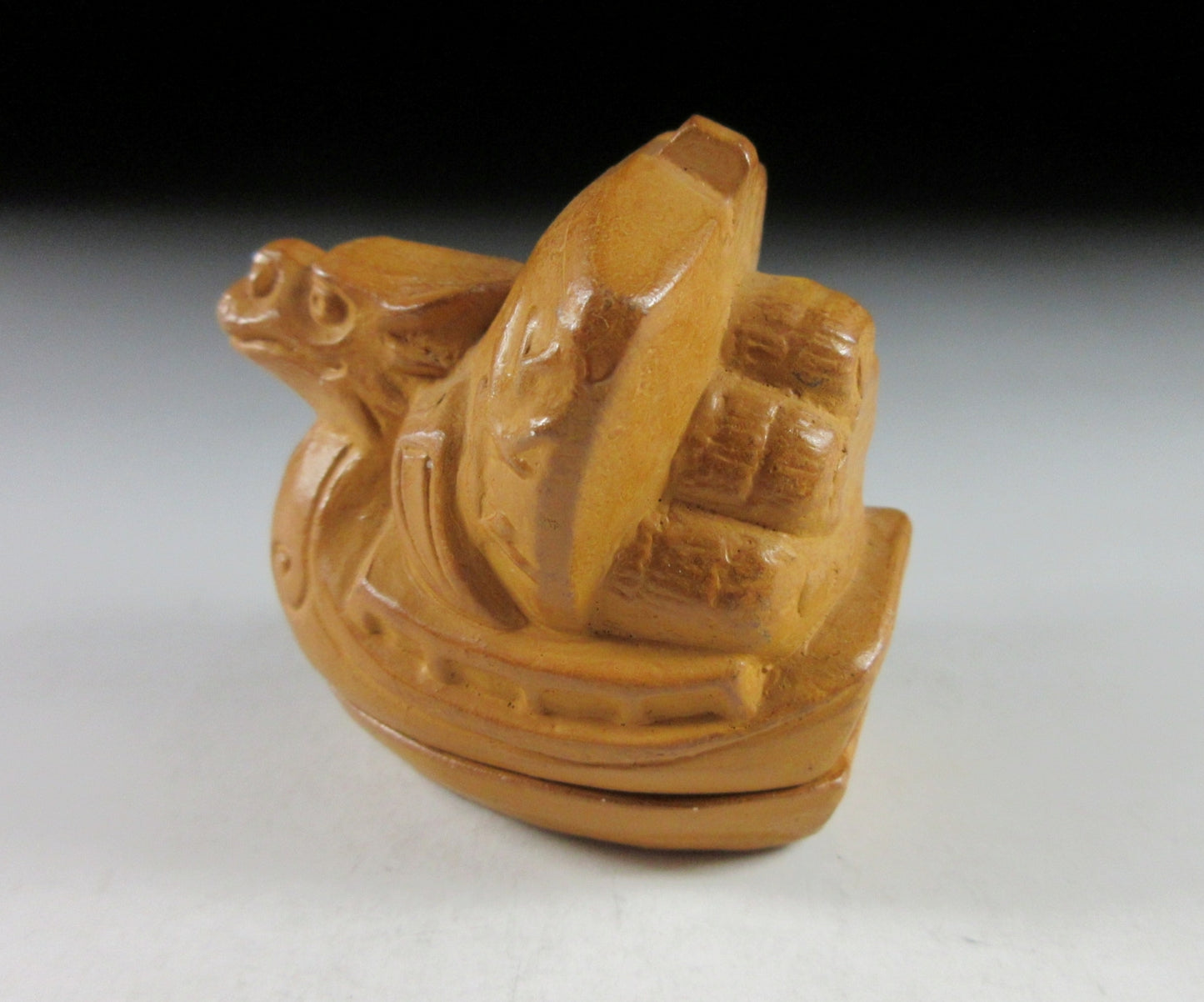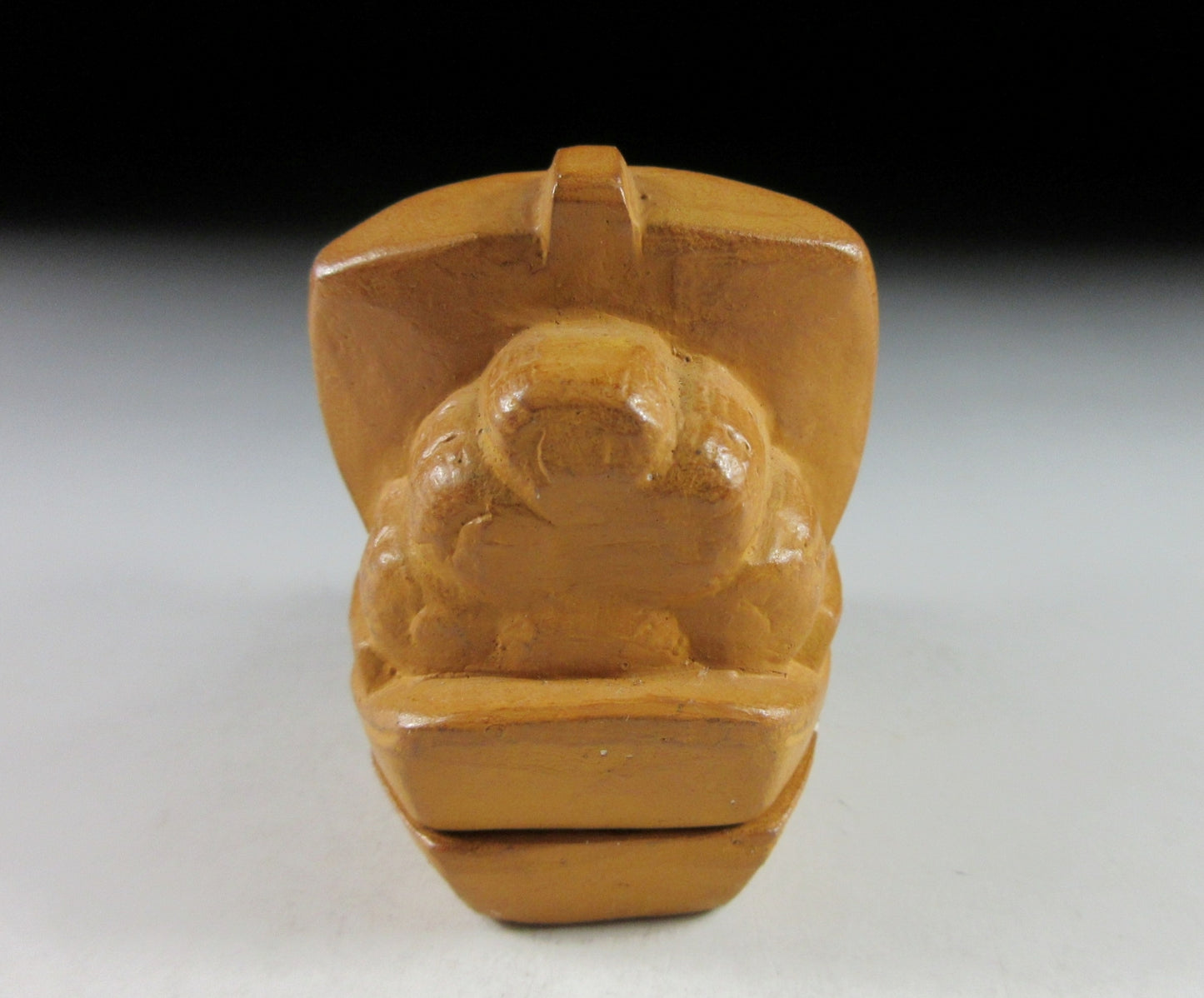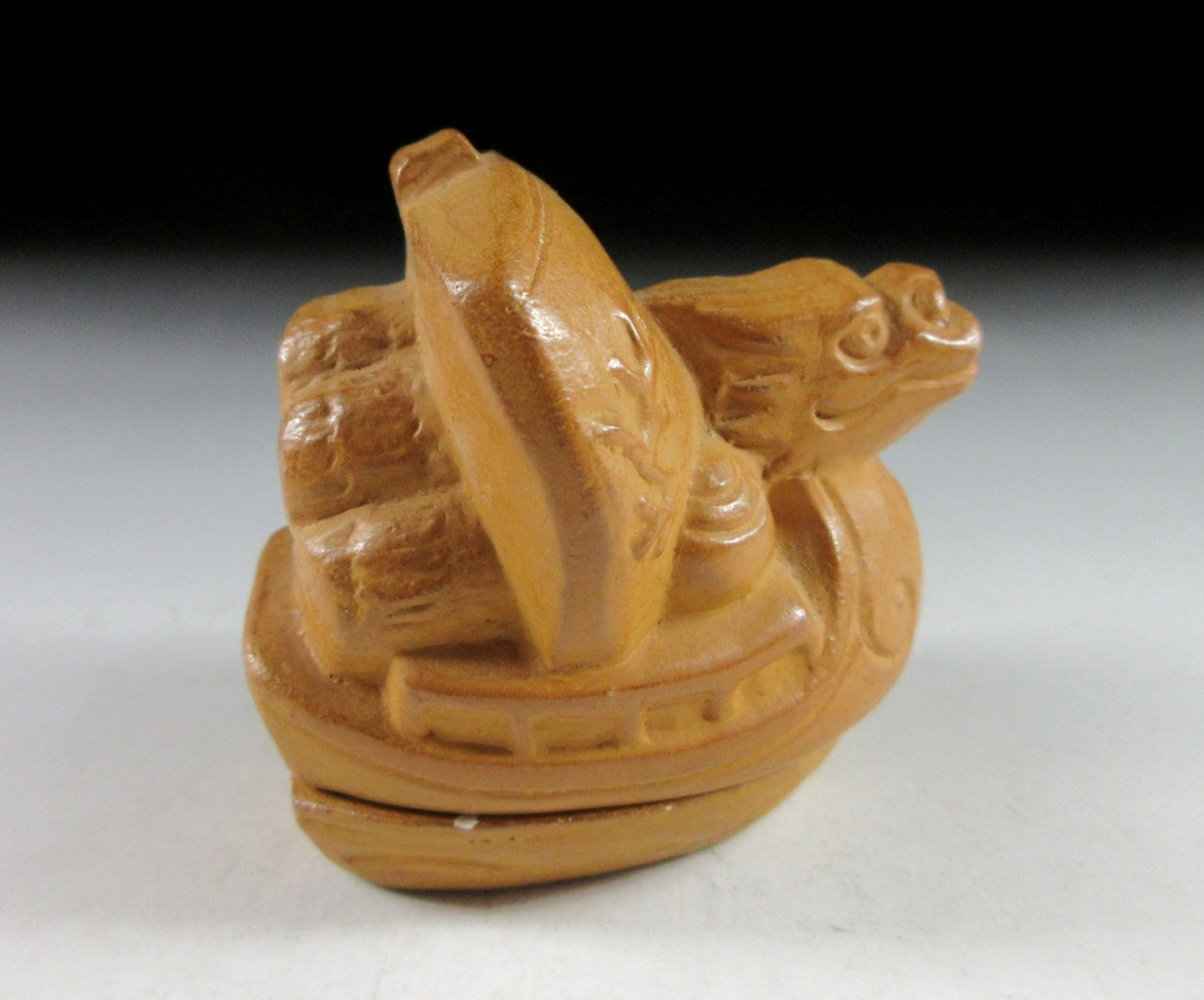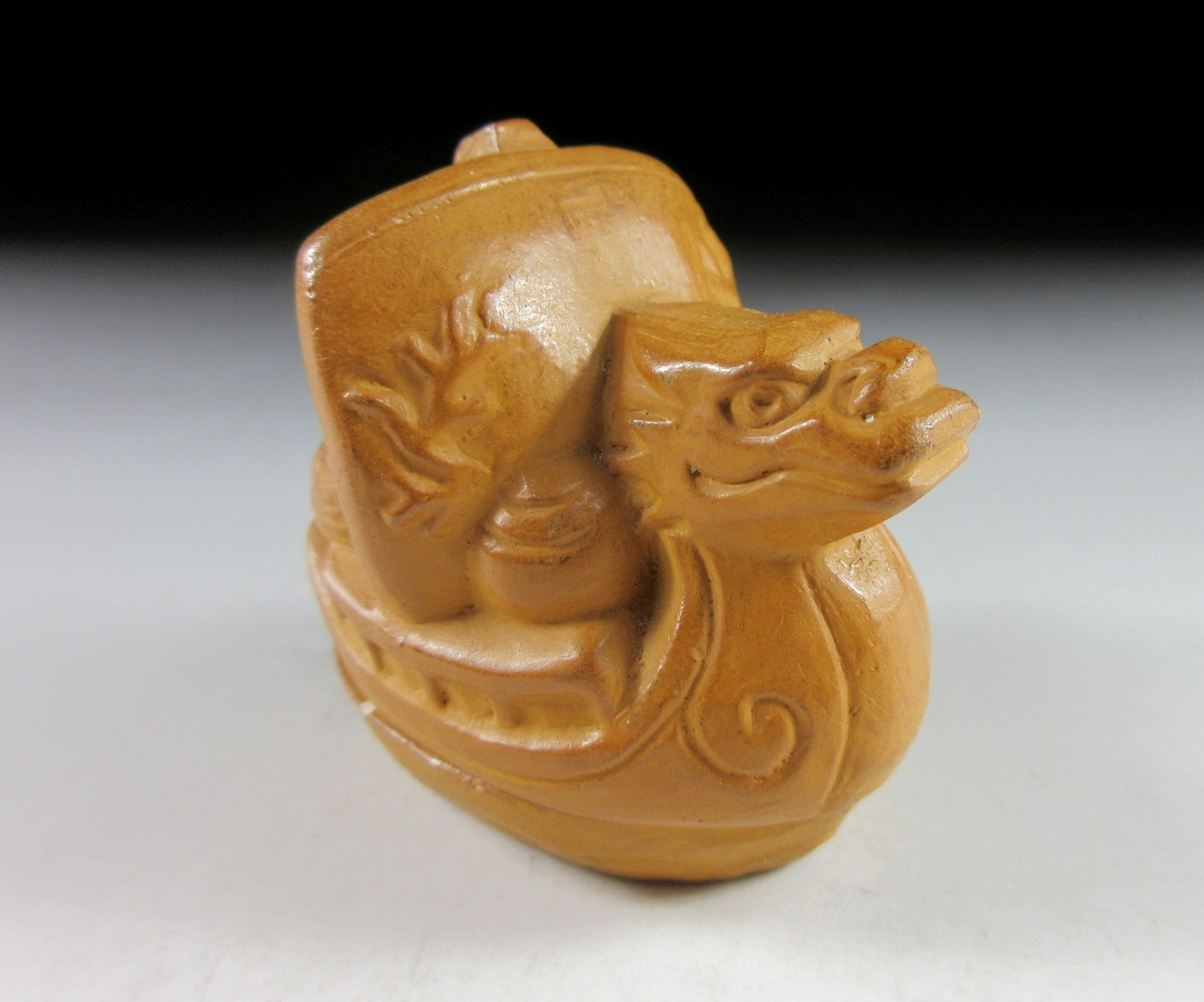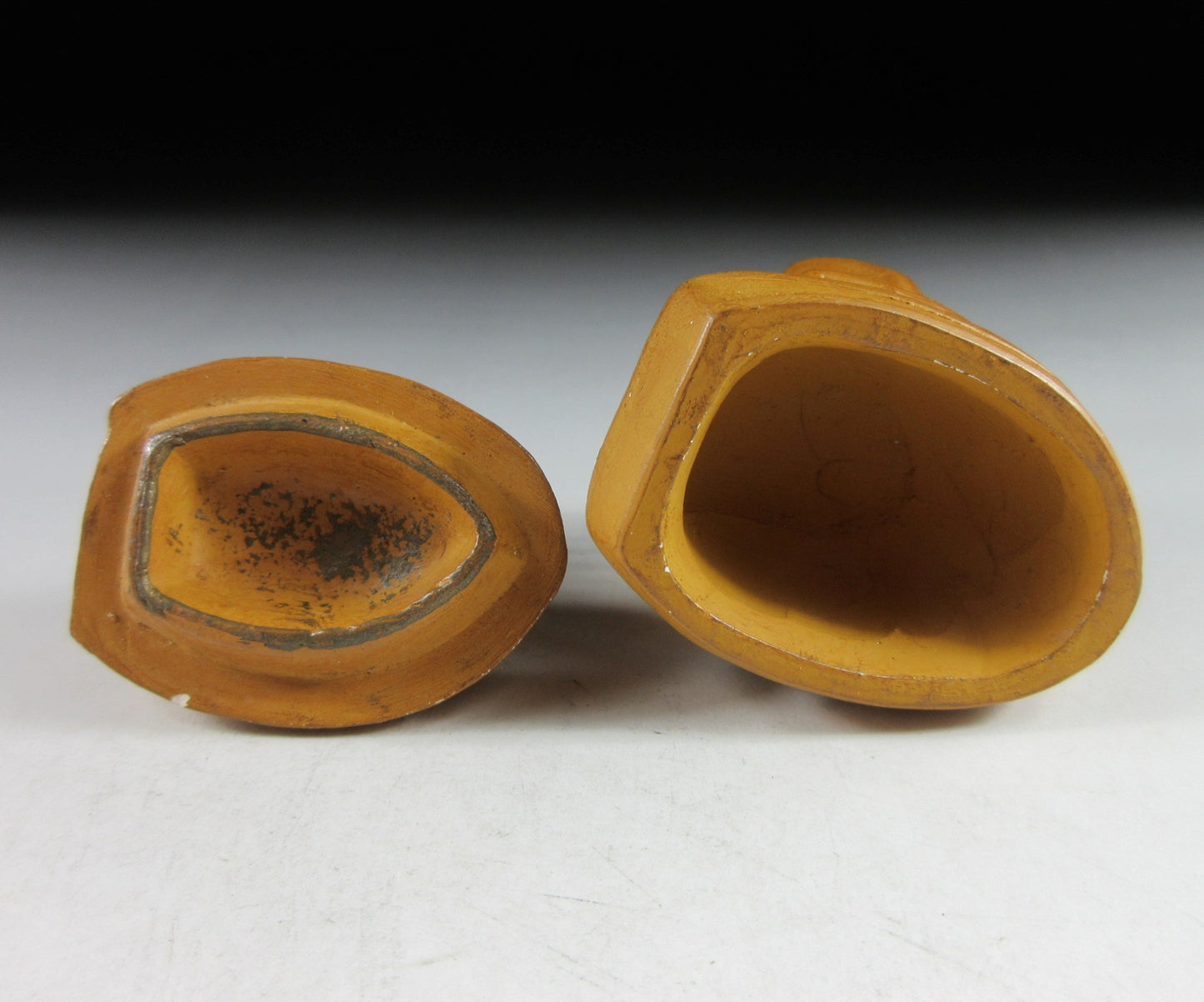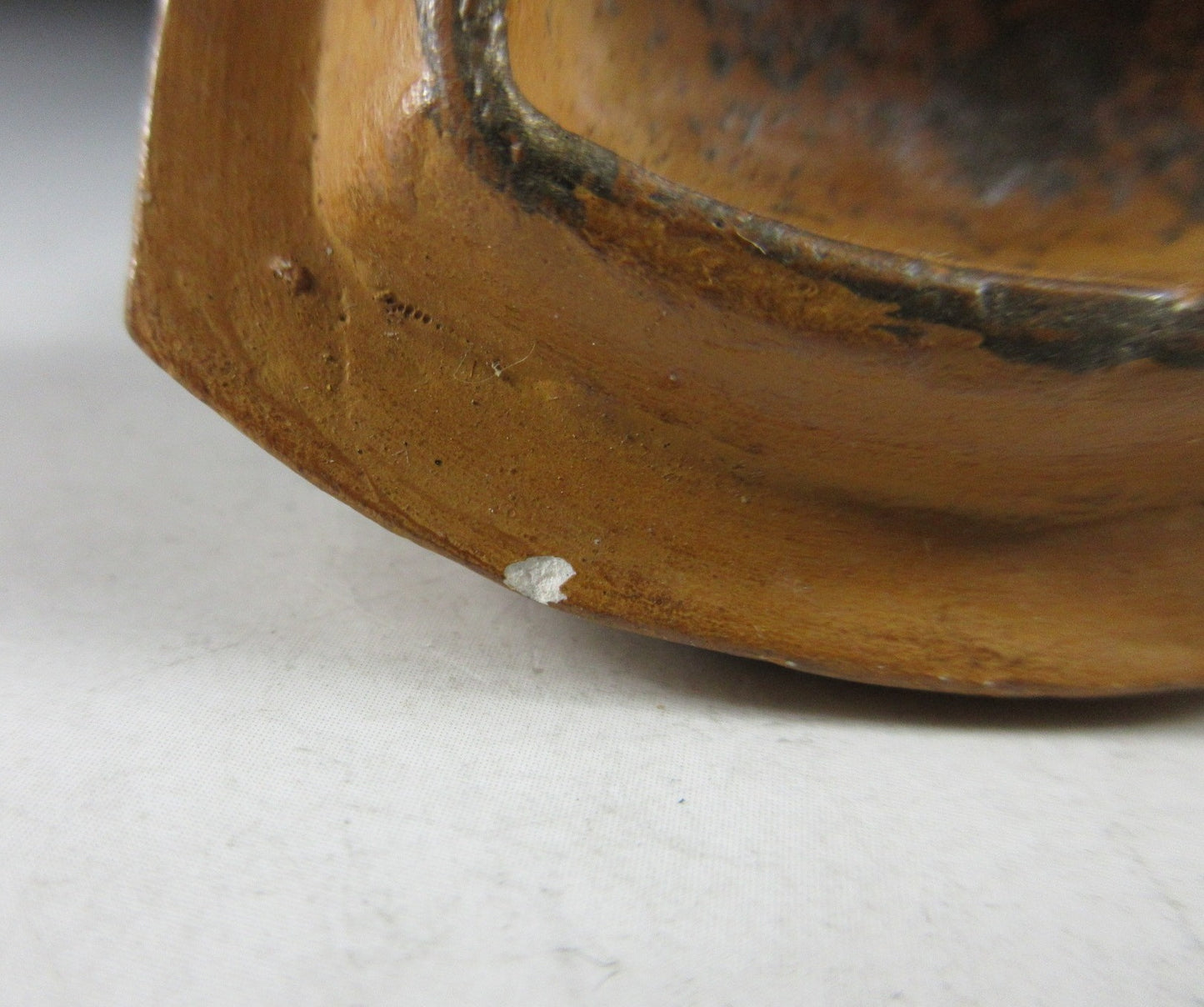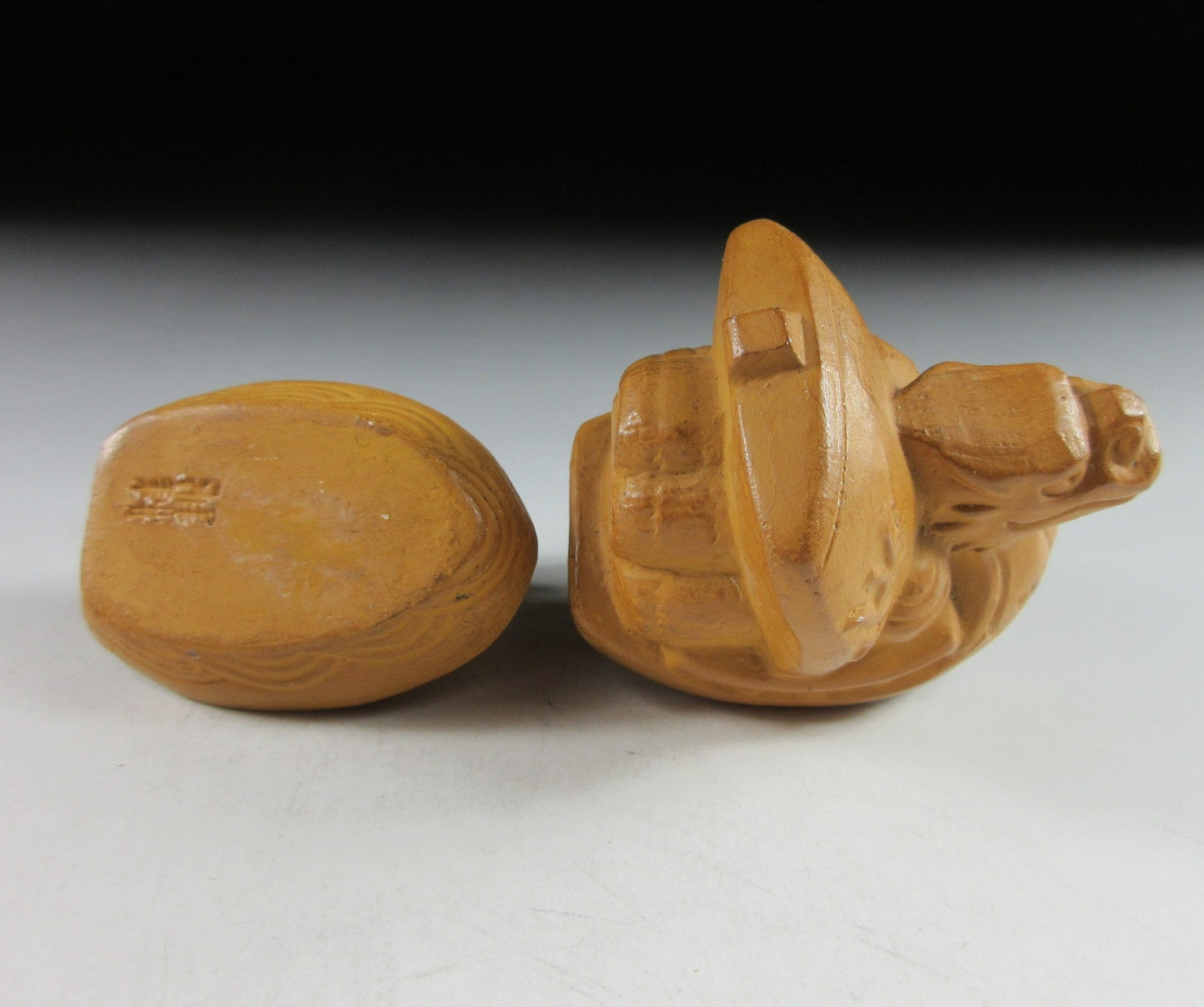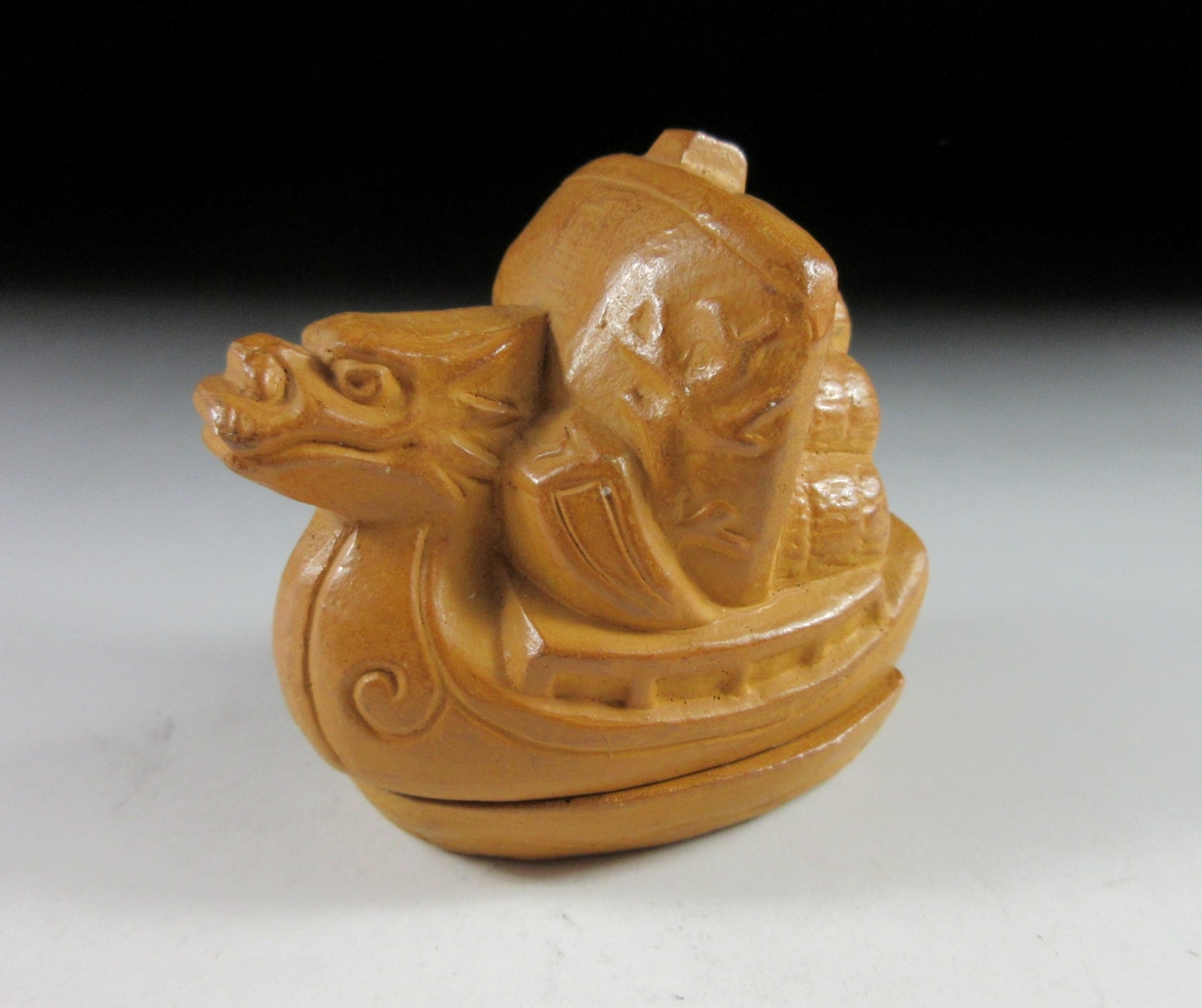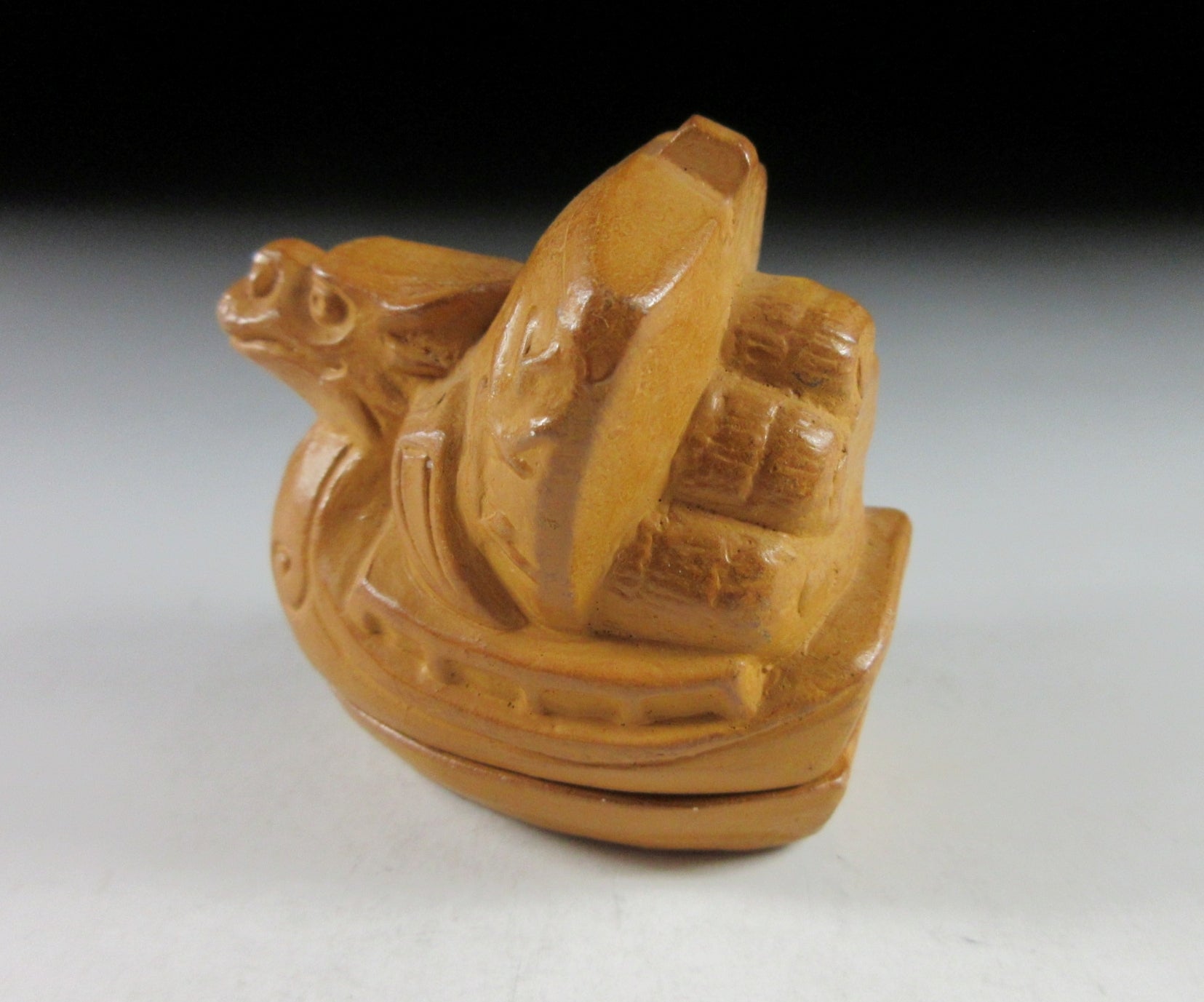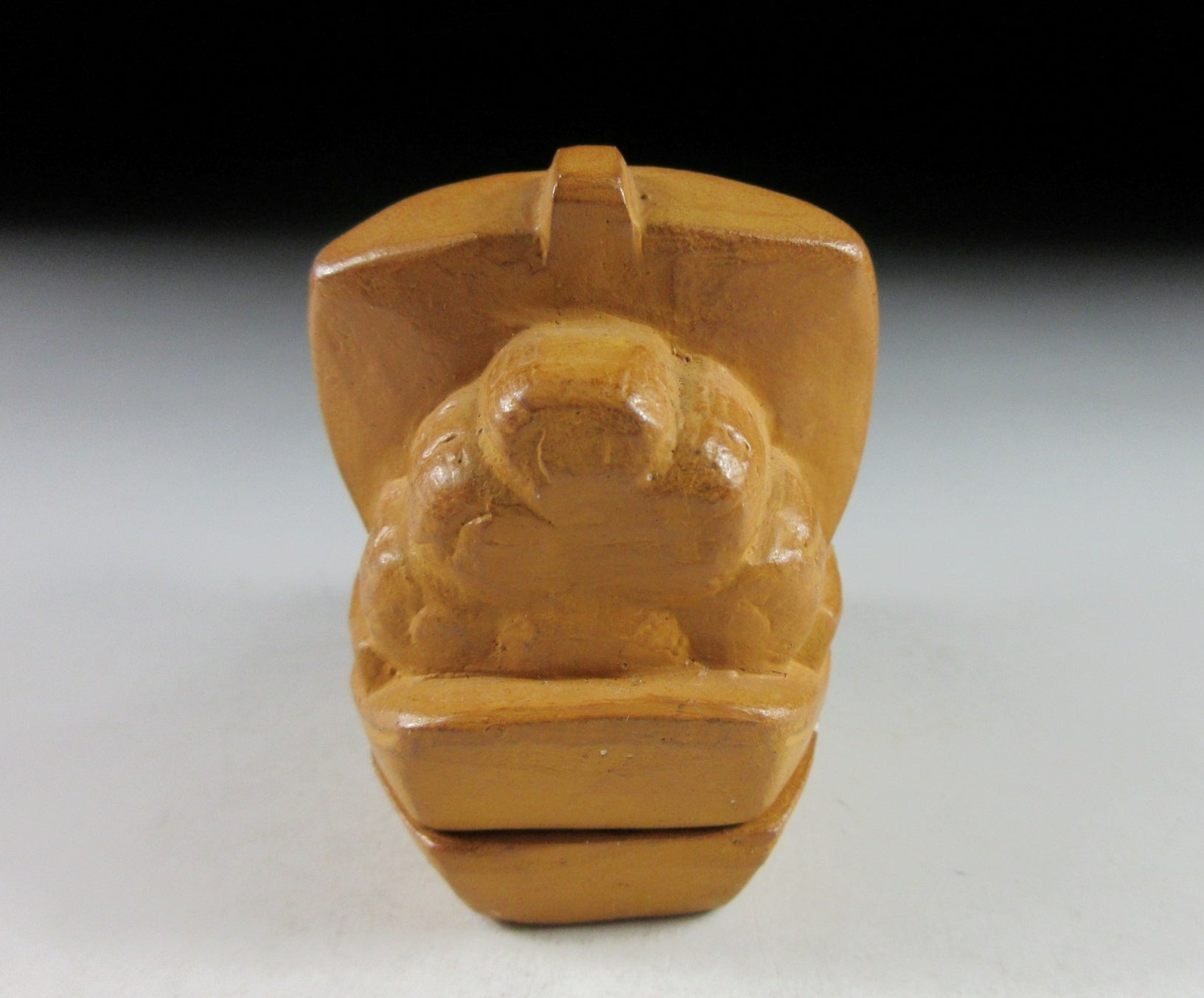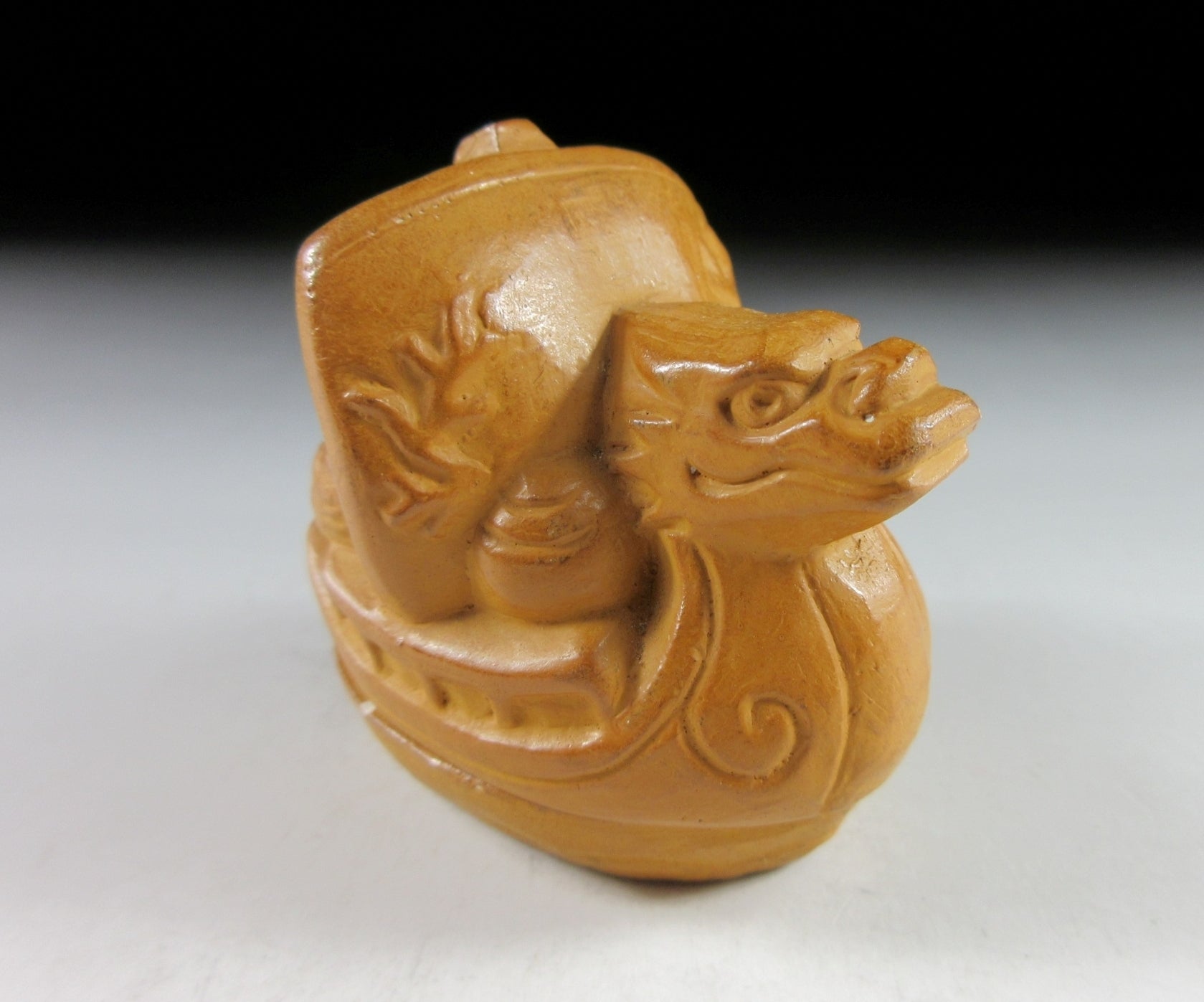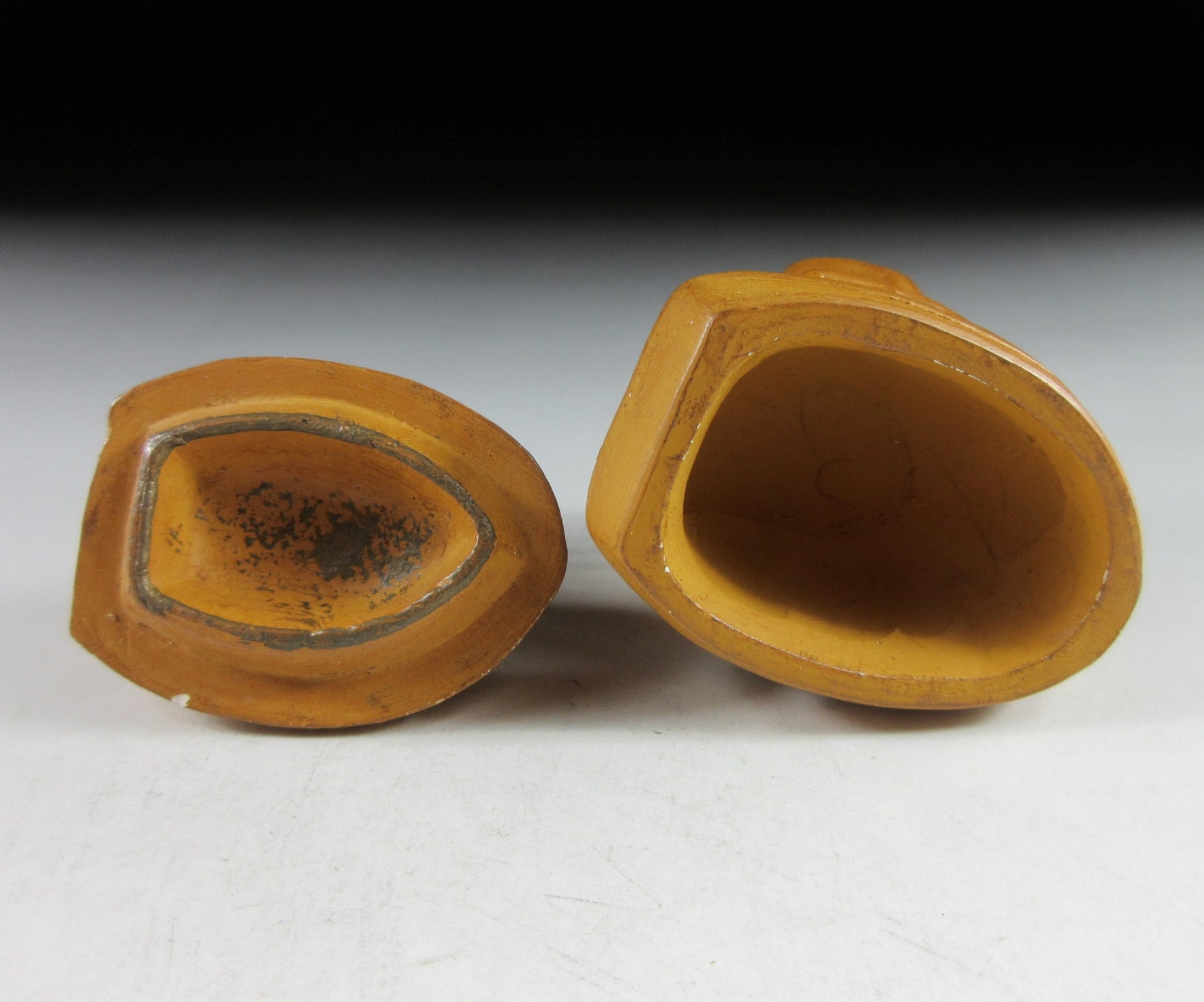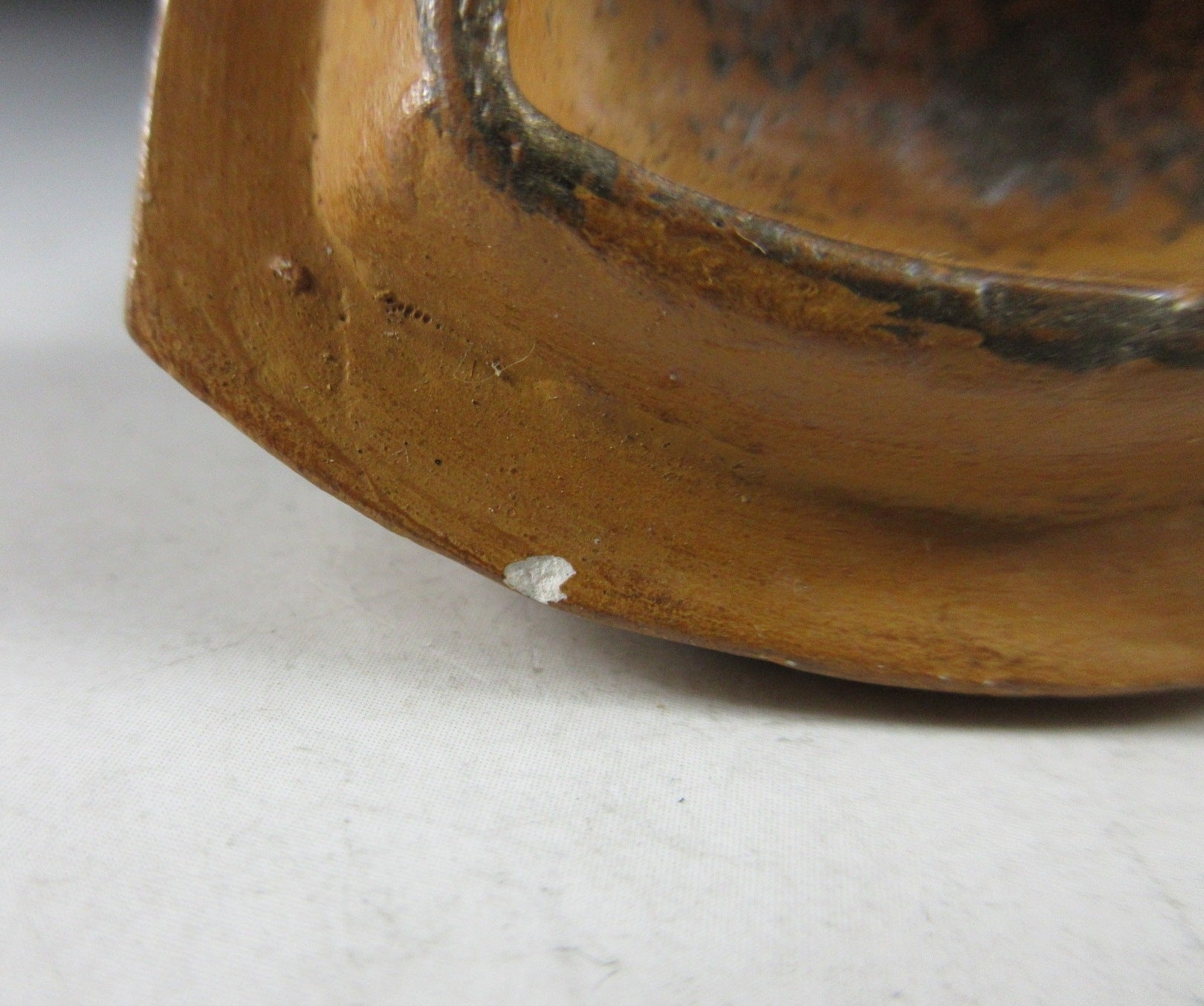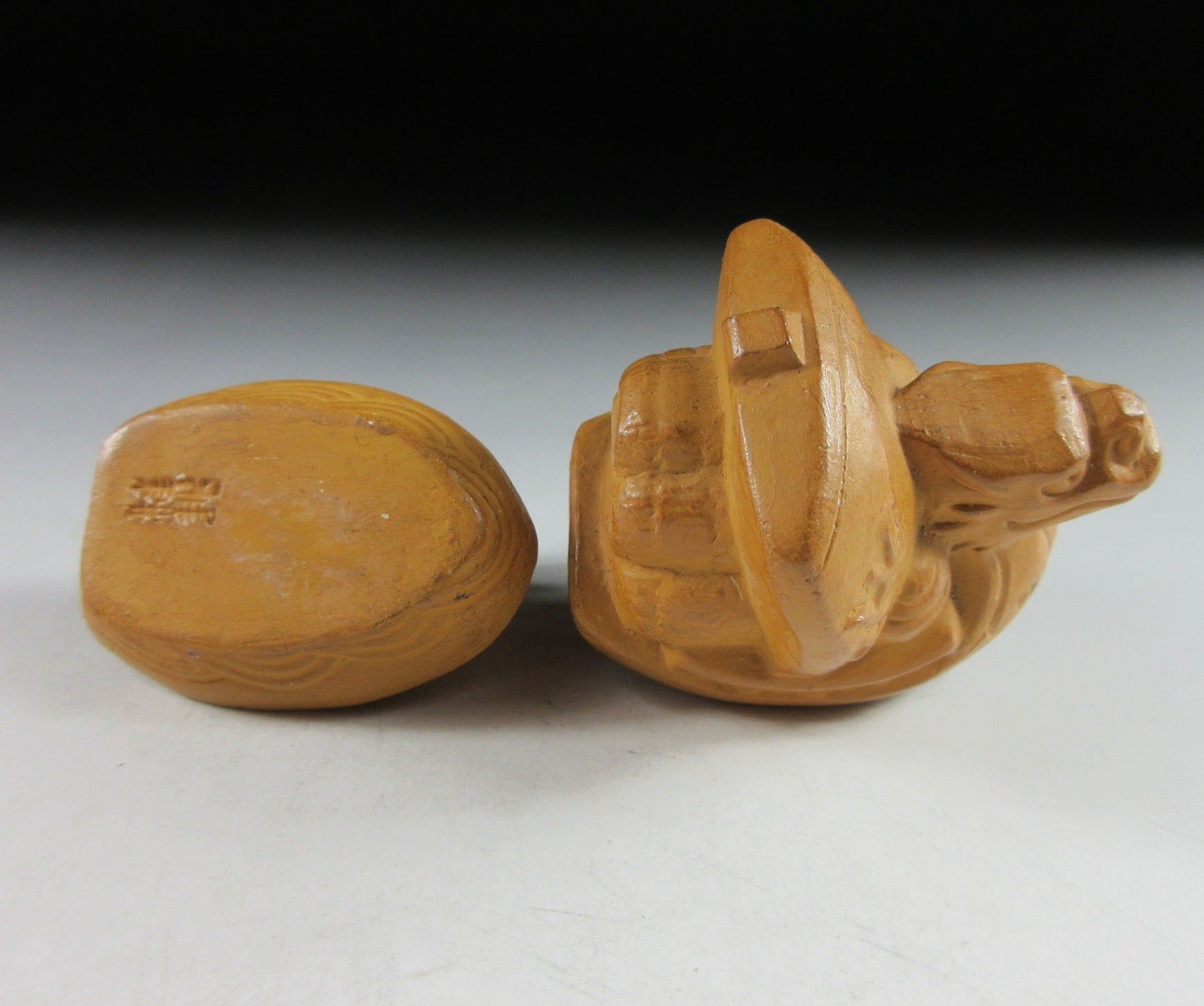Kominka Zakka
Kitamura Gako Year of the Dragon Kogo
Kitamura Gako Year of the Dragon Kogo
Couldn't load pickup availability
*SHIPPING OPTIONS VARY DEPENDING ON THE DESTINATION, PLEASE SCROLL TO THE END OF THIS LISTING FOR MORE DETAILS.
This listing is for a vintage Kyo-ware kogo made around 35 years ago by noted potter, Kitamura Gako. It is made of low fired stoneware and moulded to resemble a dragon ‘takarabune’ treasure ship loaded with rice bales. Takarabune are amulets for good fortune at New Year, and dragons are believed to be gods that rise out of the sea. It is said that the seven gods of fortune make port on New Year’s Eve to spread good fortune and happiness to everyone. Children should place a picture of the gods aboard their ship under their pillow, and if they have a lucky dream they will be lucky for the whole year. The piece was most likely made to commemorate the Year of the Dragon back in 1988. Its size and shape is suitable for holding both woodchip and kneaded incense, although pottery kogo are typically used for kneaded incense during the cooler months. The stamp of the potter can be found on the bottom.
Kitamura Gako is a Kyo-ware potter who produces low-fired wares such as kogo incense holders and okimono. He decorates his wares with gofun and clam shell gesso, and hand-paints each piece one by one. His work expresses Nara’s ittobori woodcarving technique, and his kogo have the same angular shapes and chiselled appearance as ittobori wares. He is a member of the Kyoto Ceramic Art Association, and he was the winner of the Japan Ceramics Society Association Award in Kyoto. **Fellow sellers, this information was researched by Kominka Zakka and cannot be used in your own listings.
Kogo are for holding incense during the tea ceremony. Kogo vary depending on the season. In summer wooden kogo are used for holding chips of incense wood, and in winter ceramic kogo are used for holding kneaded incense intended for the hearth. During the tea ceremony, incense is added to the charcoal fire during the charcoal-laying procedure.
Kyo-ware originated in the 17th century in Kyoto and features overglaze enamel pigments on a porcelain base. The porcelain base acts as white canvas, allowing for beautiful and superior quality designs to be painted. Kyo-ware artisans traditionally produced chawan and utensils for the tea ceremony, however contemporary potters specialize in tableware, tea ceremony items, incense holders, and okimono. Kyo-ware was designated as a traditional craft in 1977.
Size
H.5.2cm (2”) x L.5.6cm (2.2”) x W.3.9cm (1.5”)
Condition
It’s in decent condition aside from scuffing and one very small chip.
THESE ARE SHIPPING ESTIMATES BASED ON THE CURRENT GLOBAL SITUATION
**Germany, France, Greece, Spain, Poland, Austria, Slovakia, Lithuania, Slovenia: NO SHIPPING. Very strict and expensive packaging laws in place and we are not licensed to send products to these countries. We have no plan to register at this time because the process is in some cases very expensive and complicated, plus each country has its own set of regulations and application process.
**USA, UK, Canada, Australia, New Zealand, Switzerland, Norway: Airmail Small Packet (approx. 15-28 days). Combined shipping available up to 2kgs for Airmail Small Packet (please send us a message).
**Asia: Airmail Small Packet (approx. 15-21 days). Combined shipping available up to 2kgs for Airmail Small Packet (please send us a message).
**Central Asia, Middle East, South Africa, Brazil, Mexico: EMS Express 10-15 days.
**Russia: No shipping methods available.
Share

